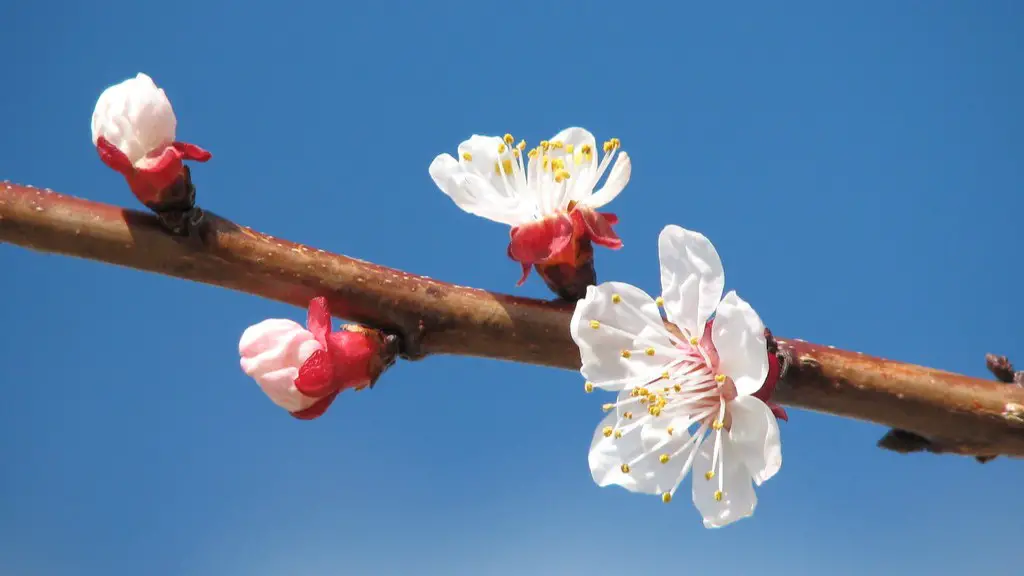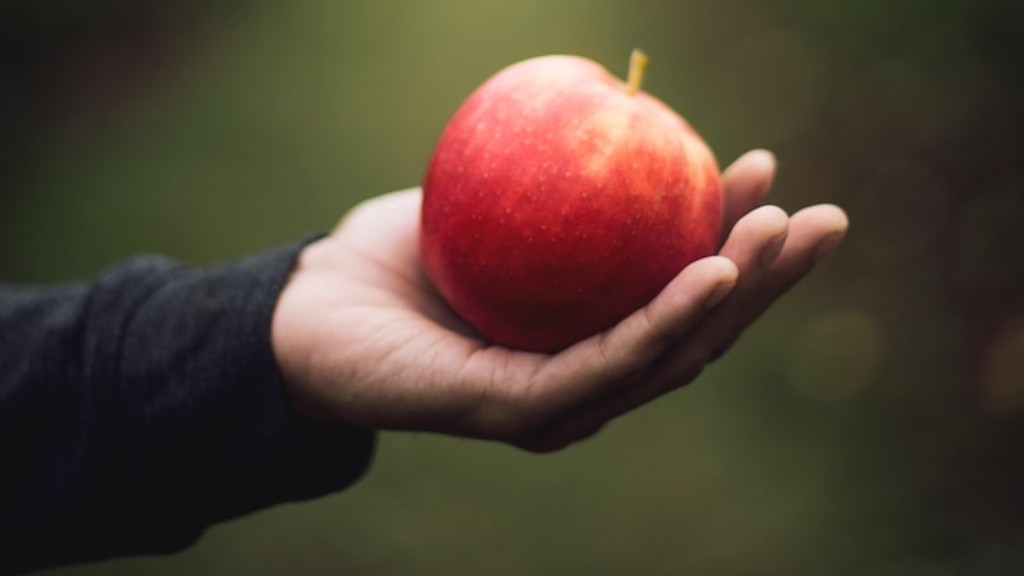Wax apple trees are native to Southeast Asia and require a tropical climate to grow. They can be started from seed, but it is easier to purchase a young tree from a nursery. Wax apple trees need full sun and well-drained soil. They are drought tolerant but will produce more fruit if given supplemental water during dry periods. Fertilize wax apple trees three times a year with a balanced fertilizer. Wax apples will begin to produce fruit in 3-5 years. The fruit is ripe when it is soft and the skin is red or green.
It is best to grow wax apple trees in areas with full sun and well-drained soil. Amend the soil with compost or other organic matter before planting. Wax apple trees can be purchased as bare-root trees or potted plants.
Bare-root trees should be planted in the early spring before new growth begins. Soak the roots in water for a few hours before planting. Potted plants can be planted anytime of year.
Space wax apple trees 15-20 feet apart. Once planted, water the trees well and keep the area around the trees weed free. Fertilize the trees in early spring with an all-purpose fertilizer.
How do you take care of a wax apple tree?
Wax Jambu trees are native to tropical regions and need adequate rainfall and some humidity for best growth. They can be container grown to a certain extent, but in dryer areas, trees should be protected from dry winds and given regular irrigation. Wax Jambu trees usually require very little attention and no pruning.
If you’re looking for a fruit tree that will bear fruit within 1-2 years, then a Wax Jambu tree is a great option. Wax Jambus are air-layered and produce fruit that is similar to apples. They are a great choice for those who want to enjoy fresh fruit without having to wait too long.
What temperature do wax apple trees like
Wax apple trees are tropical and cannot tolerate temperatures below 44 °F (7 °C), preferring temperatures above 64 °F (18 °C) (Kuo, 1995; Huang et al, 2005). Fruits of wax apples prefer warm temperatures for normal growth and development as low temperatures impede fruit growth and red color development, while high temperatures may cause fruit drop and yield loss (Kuo, 1995).
Wax apples are a type of fruit that is grown in Southern California. They are typically in season during the fall months, but some growers say that there are two seasons for wax apples. One is now and the other is in late fall. This means that you may be able to find wax apples at different times of the year depending on where you live.
How long does it take wax apple to fruit?
I have found that my tree grows best when I give it plenty of water and fertilizer. It also seems to like full sun, as it produces the most fruit when it is in a sunny spot. I prune it every year to keep it from getting too big, and this seems to help it produce more fruit as well.
Rose apple trees require a lot of nitrogen, phosphorus, and potassium in order to produce a healthy crop. Urea, a type of fertilizer, is often used to provide these nutrients. Along with urea, farmers also apply organic matter, such as well-decomposed farmyard manure, to the rose apple trees.
How long does it take for wax jambu to fruit?
The 40-70 day window is when the white flesh of the fruit is watery, spongy, crisp, low acid, and aromatic. The pink skinned fruit are usually juicier and have 0-3 globose seeds that are up to 1 cm in diameter. The fruit usually ripen within this window.
The girdling of the wax apple tree trunk is shown in Fig. 14. The tree trunk is girdled11 with a water-soaked bandage daily.
What is the sweetest wax jambu
If you’re looking for a sweet and juicy jambu, the white wax jambu is a great choice! This variety is similar to the red wax jambu, but has white waxy skin and is sweeter. However, it is much more cold sensitive, so make sure to keep it out of the fridge!
Bright Light
They need bright light but indirect. Water the plant frequently enough in spring and summer that the soil is kept moist. Misting is also a good idea unless the plant is kept in the bathroom where shower steam will keep the air humid.
Do I need to winterize my apple tree?
Winterizing fruit trees is a no brainer. And it’s worth taking a few extra minutes in the fall to ensure that these valuable assets to the landscape are well protected until spring.
Fruit trees are generally quite hardy, but they can be damaged by harsh winter weather. The best way to protect them is to wrap them in burlap or another breathable material. This will prevent the freezing and thawing of the tree’s branches, which can eventually lead to breaking.
You should also prune any dead or damaged branches from the tree. This will help the tree to focus its energy on the healthy parts of the plant.
Finally, make sure the tree is getting plenty of water. A good soaking before the ground freezes will help to keep the roots healthy and hydrated throughout the winter.
Mulching is an effective method of protecting fruit trees in winter, as it helps to insulate the roots and prevent them from becoming too cold. It is important to make sure that the mulch is not too thick, as this can cause the roots to rot. A thick layer of mulch will also help to prevent the tree from being damaged by frost or snow.
Are wax apples self pollinating
A self-fruitful tree is one that is able to pollinate itself in order to produce fruit. This type of tree usually takes a few years to produce fruit, but the fruit is usually worth the wait. The fruit of a self-fruitful tree is typically bell-shaped and has a thin, waxy skin. The bottom of the fruit is usually indented and covered by four fleshy, calyx nodes. The fruit is also relatively light in weight.
Growing an apple tree from the seeds inside the fruit you bought on your last grocery run is not a myth. It’s not quite as simple as just scattering them across the ground in your yard, but with the right care (and a lot of patience), it’s possible to cultivate your own fruit-producing tree.
How tall does a wax apple tree grow?
Syzygium samarangense is a tropical tree that grows to 12 m (39 ft) tall, with evergreen leaves 10–25 cm (4–10 in) long and 5–10 cm (2–4 in) broad. The leaves are elliptical, but rounded at the base; they are aromatic when crushed.
Wax Jambu fruit is a popular selection and fruit in Asia. The sweetest selection Pink Wax jambu fruit is very similar to that Red Wax Jambu but it has white waxy skin and is sweeter, but more cold sensitive in nature.
Final Words
To grow a wax apple tree, you will need a young tree or sapling, a pot, and some potting soil. Choose a pot that is at least 12 inches wide and 12 inches deep. Fill the pot with potting soil, and then dig a hole in the center of the pot that is big enough to fit the roots of your tree. Gently place the tree in the hole, and then fill in the hole with more potting soil. Water the tree thoroughly. Place the pot in a sunny spot, and water the tree regularly.
When growing wax apple trees, it is important to plant them in an area with full sun and well-drained soil. These trees are relatively low maintenance and can tolerate a wide range of soil types and moisture levels. However, they will produce the best fruit when given proper care and attention. Fertilize wax apple trees every few months with a balanced fertilizer and water them regularly, especially during hot, dry periods. With a little care and patience, you can enjoy the delicious fruits of your very own wax apple tree.

